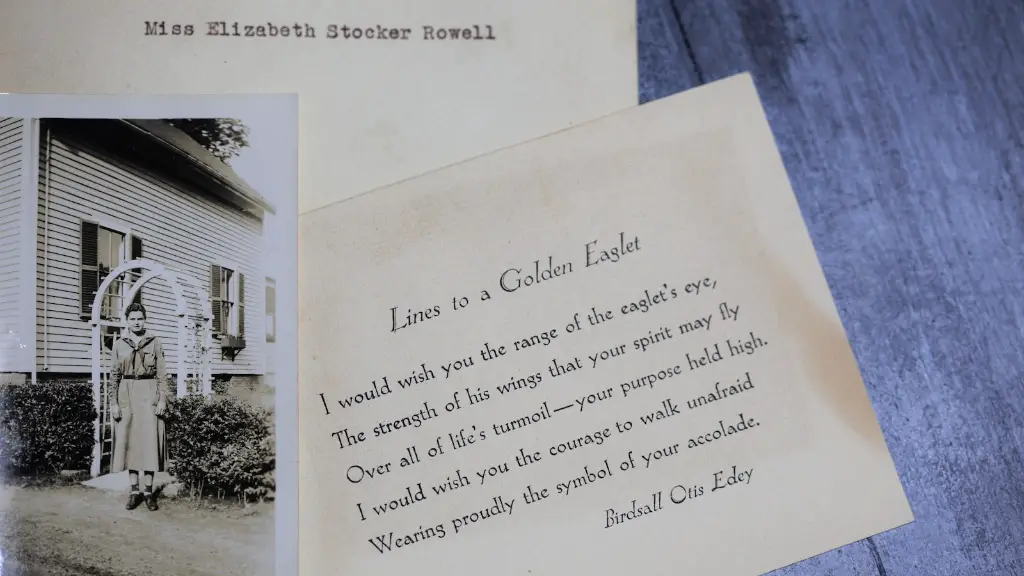Robert Frost is one of the most identifiable of American poets. He was a four-time Pulitzer Prize-winner, known for his poetic insights into everyday life and his attention to rural themes. His most celebrated poem is without a doubt “Stopping by Woods on a Snowy Evening,” published in 1924. This popular work of art has been previously included in school textbooks, literature compilations, recordings, and used as an inspiration for films and artworks.
The first thing that stands out in this classic composition is the serene, contemplative mood evoked through the simple but vivid language. We find Frost in a wintry landscape, something that had become a symbolic presence in his canon. Although he’s an observer of nature, he also embraces a kind of solace, which allows him to enjoy this moment in the midst of his fast-paced life.
The poem is quite short, with only four stanzas and a total of 28 lines. It’s easy to remember the measured rhythms and the recognizable images within the verses, something that made the poem an instant favorite with the public. One can also infer the influence of English Romanticism in certain sections, as Frost’s penchant for alliterations and personifications, filled with reverence for all things natural, can be felt throughout.
The title of the poem is perhaps what resonates the most in the reader. This phrase “Stopping by Woods on a Snowy Evening” contains a very attractive visual power, as well as the metaphorical allure of a journey. The fact that Frost vanishes and we’re left with the complete tranquility of the forest gives us the idea that turmoil and movement are fleeting compared to the permanence of the woodlands and the snow. The mood here is similar to that of a painting, where time stands still and the human observer can find peace to meditate on life and feelings in a reflective manner.
To fully grasp the beauty of this enchanting composition, we should take a closer look at the rhyme and semiotics. The rhyme scheme of the poem is A-B-A-A; this repetition focuses our attention on the imagery and the metaphor. As for the connotations, the woods and their trees are a representation of something beyond the tangible world, such as the eternal nature of the soul and its spiritual journey. Therefore, we can understand “Stopping by Woods on a Snowy Evening” as a timeless exploration of the relationship between we, as humans, and the essential elements of life.
Comparison to Other Poems
The popularity of Frost’s poem can be gauged by the fact that it remains an innate part of our collective consciousness, even though it’s more than a century old. However, “Stopping by Woods on a Snowy Evening” is only one of Frost’s many-storied works. Other works such as “The Road Not Taken” and “Birches” have also earned him much acclaim, even though they weren’t as widely read as this particular masterpiece.
When looking at the other two famous compositions, one is presented with what feel like a mix between witty philosophical musings and a tribute to the landscape. In the Road Not Taken, the speaker reveals a sharp keenness for the unknown, and bemoans the idea of missed opportunities, which he implies are part of the human condition. As for Birches, although it’s a lengthy piece, with a dedicated stanza approximately for every moon phase of a year, the focus is set on being able to appreciate the beauty of nature and the use of metaphor and imagery to identify with the sublime.
These feelings of nostalgia, imagination, and longing are all present in “Stopping by the Woods on a Snowy Evening,” generating an unforgettable atmosphere among its readers. One could say that all three poems, representing a small portion of Frost’s immense body of work, strive toward the same kind of exploration of the self, in relation to the land.
Influence on Other Artists
Like any good piece of art, Frost’s poem has inspired countless other people over the years. Throughout the mid-twentieth century, the song was included in multiple cartoon productions bearing the same title. Even the underlying theme of the poem, the internal battle between obligation and freedom, influenced the lyrics of prominent singers such as Bob Dylan.
Also, the poem has served as an impetus for writer’s to explore the same dualism through their works. For example, authors and poets like Susan Glaspell and Seamus Heaney have all drawn from and played with the original lines, giving birth to new and creative ideas.
On the other side, movies, plays and TV series have included Frost’s poem in their scripts for years. Series such as The Twilight Zone and Battlestar Galactica have all used the poem, sometimes as a background element and sometimes as the main storyline. Similarly, musical troupes and theater groups throughout the United States and UK have been integrating the poem in their tours.
Interpretations
As we can see, Frost’s “Stopping by Woods on a Snowy Evening” carries a profound, versatile meaning. Its popularity has led to numerous interpretations of it, although the speaker’s appreciation of nature is more or less is what remains constant. To some, this poem speaks of death and non-recognition. It’s a beautiful farewell to people, providing a little moment of peace before the rider moves on, while highlighting the insignificance of man compared to all else.
Others consider it a revealing view of life’s double-edged blade, between the temptations of pleasure and life’s mundane responsibilities. As Frost stares at the snow-laden woods, he is experiencing a sensation of seizing the day while still being mindful of the moral compass. This contradiction between longing to break away from obligations and being pulled back by guilt is something that permeates all of human existence.
Finally, as we’ve already mentioned, “Stopping by Woods on a Snowy Evening” can be regarded as a meditation on the soul’s spiritual journey, offering a glimpse into the power of nature on the individual. We can feel the observer’s mental transition from the mundane to the metaphysical. As the speaker stares in awe at the snow-covered forest, he is moved by some kind of cosmic beauty, which leads him to ponder his place in the universe.
Popularity
Frost’s “Stopping by Woods on a Snowy Evening” has earned a great many praises, as its timeless reflection on human nature and existence is still relevant today. However, in terms of popularity, the most result it has accumulated is in terms of awards and recognitions. In 1995, the American Film Institute chose this poem as one of the top 100 most inspirational works of the 20th century. It’s also been included in the list of “The 100 Most Popular Poems of all Time” by the Poetry Foundation.
In the academic world, “Stopping by Woods on a Snowy Evening” has been frequently used for educational purposes. As part of the Common Core State Standards in the United States, this poem is included as a reading assessment for middle and high schoolers on literature and language arts. Additionally, it’s regularly discussed in classes and seminars in universities around the globe.
Commentary
When analyzing “Stopping by Woods on a Snowy Evening”, one must acknowledge Frost’s craftsmanship as a poet. Through his descriptions and repeated rhymes, Frost manages to encapsulate the complexities of the human psyche, while enriching the reading experience with his signature aesthetic. At the same time, he offers us a quick glimpse into the philosophical ideas of his time. Overall, it’s fair to say that Frost had an impact on the world of poetry that still reverberates.
We can also appreciate “Stopping by Woods on a Snowy Evening” as a source of inspiration. It’s one of the most evident examples of what humans can achieve through language, even with a modest amount of words. Frost manages to bring to life a significant and heartbreaking tale, touching on topics such as mortality, and human condition in the process.
Finally, the poem acted as a bridge between Frost’s era and ours, as its underlying themes remain living in the 21st century. The call to seize the moment, weigh the consequences and remain aware of the little things that make life beautiful all make for a simple, powerful, and aspirational reminder for us all.




